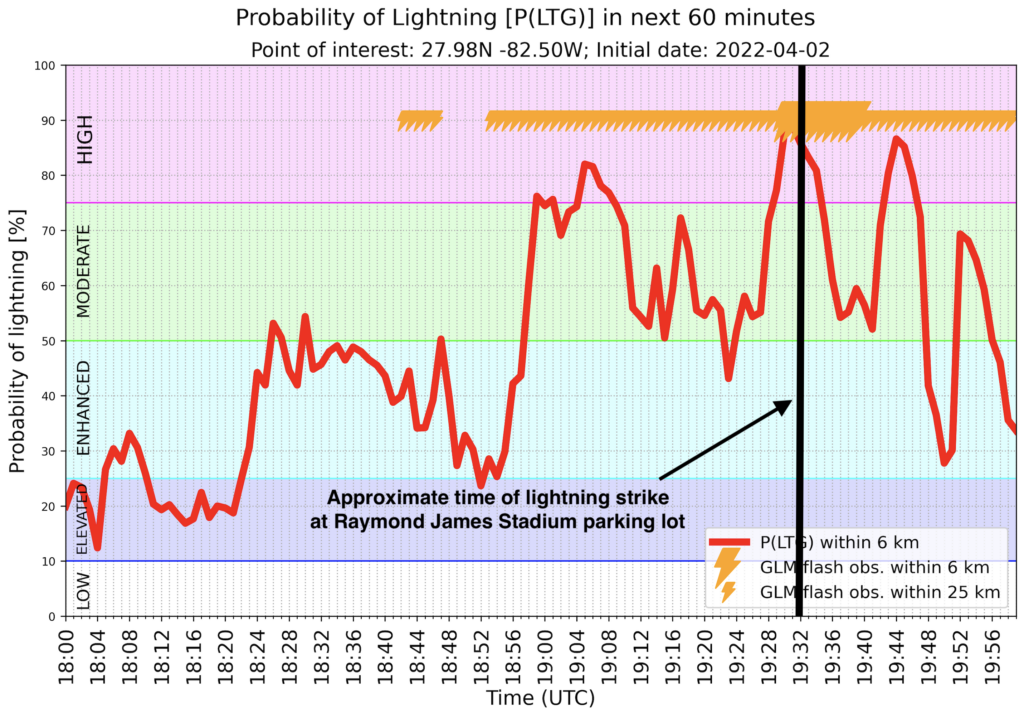LightningCast in Tampa, Florida
Thunderstorms were slowly but surely edging their way dangerously close to Raymond James Stadium in Tampa, FL, on April 2nd. The New York Yankees and Atlanta Braves had just completed a spring training game at the stadium, when two people were struck by lightning in one of the parking lots surrounding the stadium (they were hospitalized but reported to be in stable condition).
ProbSevere LightningCast is an experimental deep-learning model that is running in near-real time at CIMSS. It uses images of GOES-R Advanced Baseline Imager (ABI) visible, near-IR, and longwave-IR channels to predict the probability of lightning (as observed by the GOES-R Geostationary Lightning Mapper [GLM]) in the next 60 minutes.
Below is a time series of the LightningCast probability and GLM-observed lightning at and near Raymond James Stadium (left panel), along with an animation of LightningCast probability contours, GOES-16 0.64-µm reflectance (from a 1-minute mesoscale sector), and GLM flash-extent density (right panel) near the stadium (red circle). In this way, users can see how the model’s probabilities evolved over time at a specific location and within the vicinity.
Police officers responded to the two individuals struck by lightning at 3:45 PM local time (19:45 UTC). Based on the footprint of the GLM flash-extent density, they were struck at approximately 3:32 PM. The LightningCast probability of lightning was 75% 30 minutes before the lightning strike (remaining mostly above 50% between 3:00 and 3:32 PM). The probability of lightning first reached 50% about 1 hour before the lightning strike, and lightning started occurring within the vicinity (within 25 km) about 45 minutes before the strike.
Output from LightningCast, which leverages the high spatial, temporal, and spectral information found in GOES-R ABI, can help objectively quantify the short-term threat of convective hazards such as lightning. The model could perhaps be used by forecasters to advise outdoor venues such as stadiums to take mitigating actions sooner, or by individuals to help make safe decisions.


